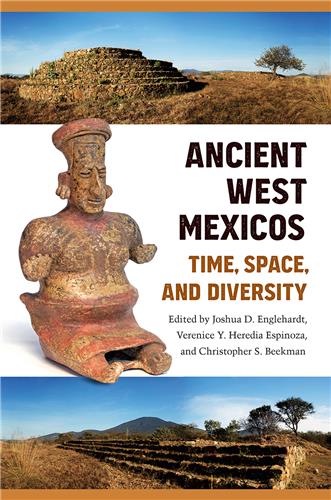Presenting studies in Andean archaeology and iconography by leading specialists in the field, this volume tackles the question of how researchers can come to understand the intangible, intellectual worlds of ancient peoples. Archaeological Interpretations is a fascinating ontological journey through Andean cultures from the fourth millennium BC to the sixteenth century, A.D.
Browse by Subject: Archaeology
Please note that while you may order forthcoming books at any time, they will not be available for shipment until shortly before publication date
This volume highlights new directions in the study of social identities in past populations. Contributors expand the scope of the field regionally, methodically, and theoretically, moving behind the previous focus on single aspects of identity by demonstrating multi-scalar approaches and by explicitly addressing intersectionality in the archaeological record.
In this book, C. Riley Augé provides a trailblazing archaeological study of magical practice and its relationship to gender in the Anglo-American culture of colonial New England.
This volume highlights the diversity and complexity of western Mexico’s pre-Hispanic cultures and argues that the region was more similar than many researchers have believed to the rest of the Mesoamerican world.
Viewing historical and archaeological data through the lens of her personal experience of Roman Catholicism, and informed by feminist approaches, Elizabeth Graham assesses the concept of religion, the significance of doctrine, the empowerment of the individual, and the process of conversion by examining the meanings attributed to ideas, objects and images by the Maya, by Iberian Christians, and by archaeologists. Graham’s provocative study also makes the case that the impact of Christianity in Belize was a phenomenon that uniquely shaped the development of the modern nation.
While previous studies of dogs in human history have focused on how people have changed the species through domestication, this volume offers a rich archaeological portrait of the human-canine bond. Contributors investigate the ways people have viewed and valued dogs in different cultures around the world and across the ages.
Showcasing the enormous amount of archaeological data available on the experiences of Chinese people who migrated to the United States and Canada in the nineteenth century, this volume charts new directions for the field of Chinese diaspora archaeology by providing fresh, more nuanced approaches to interpreting immigrant life.
The years 1500–1700 AD were a time of dramatic change for the indigenous inhabitants of southeastern North America, yet Native histories during this era have been difficult to reconstruct due to a scarcity of written records before the eighteenth century. Using archaeology to enhance our knowledge of the period, Contact, Colonialism, and Native Communities in the Southeastern United States presents new research on the ways Native societies responded to early contact with Europeans.
This volume uses archaeological and historical evidence to reconstruct daily life at Betty’s Hope plantation on the island of Antigua, one of the largest sugar plantations in the Caribbean. It demonstrates the rich information that multidisciplinary studies can provide about the effects of sugarcane agriculture on the region and its people.
At its height between AD 1050 and 1275, the city of Cahokia was the largest settlement of the Mississippian culture, acting as an important trade center and pilgrimage site. While the influence of Cahokian culture on the development of monumental architecture, maize-based subsistence practices, and economic complexity throughout North America is undisputed, new research in this volume reveals a landscape of influence of the regions that had and may not have had a relationship with Cahokia.











